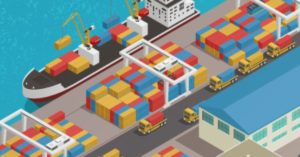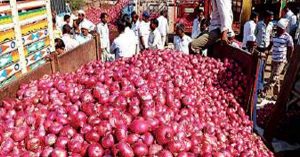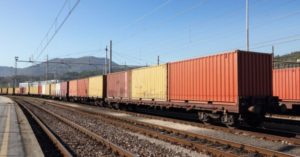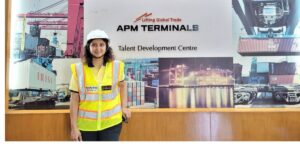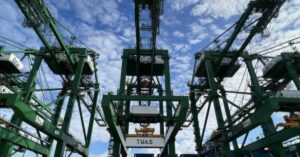Indian Ports Association (IPA), an apex body of the Major Ports of India acts as a Think-Tank to the Ministry of Shipping, Government of India and is rightly hailed as the Centre of Excellence (CoE) helping the Major Ports to achieve eminence in their operations and management, thus contributing to the growth of the economy of the ports and the country at large. Dr. A. Janardhana Rao, Managing Director, IPA, details on the performance of the port sector and future plans to make it more vibrant.
Let me begin with the recent developments in policy framework that is coming up in the port sector. The Government of India has recently enacted the Major Port Authorities Act 2021 to transform all the major port trusts into port authorities. So, with this, what changes could we see in future and what efficiencies will emerge on this transformation?
Yeah. Actually all major ports are governed by an enactment called The Major Ports Act 1963. But the act had provisions pertaining to the circumstances which were there in 1963. Thereafter, lot of changes have taken place in the port sector, maritime sector in India as well as abroad. So, we have to strengthen future mechanism, which is to give more freedom and autonomy to the ports trust and reduce less dependence on other kind of external factors. So, we thought of changing the enactment itself which gives more freedom to the Port Trust, it gives more autonomy to the Port Trust. So, that is how the MPA bill was conceived and it was being put forth to both the Lok Sabha and Rajya Sabha and has been passed successfully. The MP Act 2021 will provide more autonomy to ports and help them to take decision faster with respect to infrastructure development which is very important and change the market conditions, that’s more important again. It is expected to usher a new era of administration in major ports in India in which major ports will contribute significantly to economic growth and provide world-class port infrastructure by adopting landlord port model of development that has really transformed the major ports.
The major ports have gained autonomy on many key matters including the traffic, development of port assets, master planning of infrastructure within port limits and power to make the regulations for operations in the major ports. Also, the role of Tariff Authority for Major Ports which is called TAMP, which just came into the major ports for fixation of the tariff has been done away with now, with this act, in the new act and the tariff regulator and the ports be free to switch the tariff based on the market forces. So, the impact of change in the tariff fixation is enormous as it will create inter port competition and also once the ports are empowered with tariff fixation, they will be in better position to take on markets captured by non-major ports by handling similar cargoes.
The bill also provides for the formulation of executory board that’s more important for the resolving disputes among the major ports, especially the public-private partnership dispute resolution mechanism is completely put in place in the MPA Act. So, the MPA Act 2021 will have an enormous impact on the overall maritime sector in the country and the focus should be on meeting the market demand and providing high level of services to customers leading to the adoption of high tech in the port administration.
Now the cargo traffic at Indian ports is expected to reach about 2500 million metric tonnes per annum by 2025. The ministry has envisaged a plan, a roadmap to take this to 3300 plus million metric tonnes per annum under Sagarmala project. So, this includes port operational efficiency management, capacity expansion of existing ports, and new port development, all these activities. In this direction, how is the progress happening and what are the actions that are being taken?
Traffic management in the Indian major ports, in the ports overall, both major and non-major FY 2019-20, is about 1300 million tonnes and it is expected to reach 2500 million metric tonnes by FY2030 that’s the growth which is expected. So, at the same time, capacity at the end of the FY19-20 in Indian ports was 2485.44 million metric tonnes. Thus, the current capacity utilization in the Indian ports if you look at it is only 52% at capacity utilization, the capacity of Indian major ports is expected to reach around 3500 to 3700 million metric tonnes by FY2030, so that we have a complete balance of capacity as well as performance.
Ministry of Ports, Shipping and Waterways with objective of propelling Indian into the forefront of global maritime sector has prepared a maritime India vision 2030, we call it a blueprint to ensure coordinated and accelerated growth of India’s maritime sector in the next decade, to develop global standard ports in India, and maritime vision for 2030 will identify initiatives such as development of new ports, world-class mega ports, transshipment hubs, infrastructure modernization of ports. These are the various areas in Maritime India Vision.
These initiatives help in lowering the operational costs to the ports, reducing turnaround time, providing cost efficient services, increased throughput and as well as providing ability to handle large vessels in Indian waters and developing Indian ports at par with strategic importance in South Asian region. Also, the development of Indian ports will drive cost savings to the tune of around 6000 to 7000 crore per annum and help unlock around 70,000 to 75,0000 crore worth of potential revenue during this decade thereby implementing the vision 2030.
Further, 7 to10 lakh jobs will be added in the sector because of the various schemes and the Maritime Vision 2030 is estimated to add an investment to the tune of 1 lakh to 1,25,000 crores for capacity augmentation and development of world-class infrastructure at Indian ports. So, the Maritime India Vision 2030 clearly envisages and we are driving the action plan towards achieving all those targets and objectives.
Recently, the Ministry announced that they have implemented enterprise business system in 5 of the major ports, like Mumbai, Chennai, Deendayal Port, Paradip and Kolkata. This is essentially, we understand, to provide a digital port ecosystem. Can you give some details into what kind of environment is being developed?
Because digitization is a process which is worldwide adopted, in all industries, be it any manufacturing industries, service industry or any other sector. So, ports should not lag behind. In fact, digitization is driven within government of India, in all the sectors, including maritime sector, so that we derive all the benefits of efficiency as well as cost-effectiveness. This ERP Systems project basically aims at improving efficiency in port operations, that was the basic objective of this, strengthen the flow of information across all levels to facilitate monitoring, control and decision making and policy planning. The core idea is to provide a digital port ecosystem which will adopt leading international practices without losing its alignment to the existing local needs. So, what we have done is we have done complete business process reengineering for all the ports – a total of 2474 processors across 5 ports are optimize, standardize and rationalised. That was the major achievement we did by doing war room activity. Then all the re-engineering processes are KPI driven and performances at higher level will be tracked against defined parameters for each department and processors. The proposed EBS which you are talking about will comprise of 3 core solution requirements, 1. POS, Port Operating System 2. Standard ERP solution which is finance, personnel, and management and 3. Land management, PR Management, etc. to tightly integrate with PCS which is another system which we are already getting developed and transformed. So, this is a complete integration with all those solutions, making port operations highly efficient.
The pandemic has impacted even port business also, but we see the recovery signs of economy in India, exports are going up, things are coming back to normalcy. So, in this backdrop, how is the performance of major ports and how is the recovery at the ports?
It was actually, surprisingly very good. So, initially, when the pandemic started, so we could see because of the various constraints the decline in cargo handling in major ports due to the impact of the Covid-19 which started from March 2020. But late 2020 was the worst hit month where cargo volumes almost dropped by 23.25% as compared to the same period in the corresponding year. However, since June 2020, the cargo traffic started showing trends of growth and showing trends of recovery. Container traffic has already started showing positive growth, numbers by September and since November 2020, major ports have been reporting positive growth every month. So, in fact, the statistics which we have, we have minus figure in the month to month in April to the tune of 21.08% that has gone to 23.25% in May, but if you look at the figures of November, December, January, February and March, the growth is almost 12.91% month-to-month, and the cumulative, initially it was a minus, that is deduction to the tune of 21.08%, by the end of the April to March, that is the end of the financial year, the negative figures, have come to 4.59%, almost we are completely getting recovered.
Now, government looks like it is planning to put the port assets into better utilization, better management. One of the strategies is to use the vacant land of the port trust to build the townships and other elite facilities. So, what is actually the plan, to use the assets of the ports in other modes of revenue generation and how is the plan being rolled out?
True, actually we have some land policy guidelines which were issued by ministry from time to time that was going on from last many decades – 2004 and 2014, 2015 guidelines. So, but we have to realize, because of the modern set of conditions and the growth of exim trade, to realize the full land potential and optimize the returns and generate revenue of the port land, which also suggested that the re-planning and redevelopment of areas on smart city concept, you can develop smart city concept, you can develop the lands and port industrial areas, we can develop clusters, we can develop industrial parts, so the entire orientation of land use plan is getting reoriented and these township areas which were all developed earlier need to be redeveloped by proper planning and coordinating the local areas. This may require rehabilitation and relocation needs also. There is complete rehauling, relook at the land policy being done by Ministry of Shipping to ensure the optimum utilization of township areas lands while taking into consideration needs of the port. So, this is the factor, city needs are taken care, port needs are taken care as well as environment needs are taken care.
Having a very efficient voluminous transshipment hub is a dream for India. It is time and again sought after by trade and industry also government talks about having our own transshipment hub. We have tried with ICTT for various reasons that it has not reached the levels of expectation but still government talks about transshipment hubs coming up at different locations. Recently, even Andaman and Nicobar. So, what is the government perspective of having a transshipment hub?
This particular transshipment operation being held in all other near neighbouring global ports has been the bane for all times and we are developing our own transshipment hubs to decrease the share of Indian transhipment cargo from the foreign ports. This has been the endeavour for long time that’s how we developed and now growth is pretty much seen in the ICTT also but in fact as per maritime India vision which I talked about earlier 2030, the percentage of Indian transshipment cargo handled by Indian ports is targeted to reach 75% by 2030 from current 25%. Today we are handling 25%, that is going to go around 75%. It envisages the development of transshipment in Southern India as you talked about ICTT, Vizhinjam or some other ports coming up there and that can attract Indian transshipment traffic from the current hubs elsewhere in the region and save significant revenue loss and reduce logistics cost for Indian trade. So, it will increase export competitiveness and create an opportunity for India to become a large, Asia-Africa or Asia-US, or Asia-Europe container trade traffic hub.
Of late, more discussion is happening on building a very efficient multi-modal logistics network. Now, the ministry is also rechristened as Ministry of Ports, Shipping and Waterways, and lot of attention of the government is on waterways. So, what is the ministry perspective of multimodal logistics and is there a plan towards making it very efficiently operational?
That’s very true because multimodal logistics is a thing of the present consideration of policy for that matter. So, currently what we are doing is coastal and inland waterways contribute to, if you look at it, 6% of the country’s freight modal mix, which is the lowest among maybe top 10 economies in the world which is really lowest but developing economies of South Asia like Bangladesh, they have around 16% and Thailand 12%, share of water-based transport, highlighting the scope for improvement in the share of water based logistics in India. So, there has to be a focus on waterways transport in India. The improvement of waterways transport share would lead to what happens is lowering of logistics cost for the end-user industries as water transport is cheaper than rail and road transport. Focusing on integration of coastal shipping and of the ports and inland waterways, it will increase efficiency in overall logistics cost. So, the total losses for multimodal coastal shipping comes on to around 15%, higher than the railway cost for key routes and primarily because of non-optimal vessel utilization and high first and last mile distances. To avoid all those inefficiency and bottlenecks, coastal shipping is not a viable option for fragmented market but since small parcel size is not enough to utilize the full vessel, while road and rail transport have flexibility to handle smaller parcel sizes, coastal shipping requires larger parcel size to utilize the available vessels so, it will be feasible for railways to pick up multiple cargos from different locations on their inland haulage routes. So, what we have done is at port level, we have taken several initiatives, such as relaxing Cabotage is one initiative we have taken, providing tariff discount for coastal cargo, dedicate coastal berths so that coastal cargo should get preferential treatment. However, to make the multimodal logistics a success in India, lot of work still needs to be done in terms of policy reforms in multimodal logistics and improving infrastructure of inland waterways and government is actively working on it. So, with aggregator model implemented across multiple sectors, it maybe useful to explore a similar model of water transport sector by integrating coastal shipping with inland waterways sector. So, an aggregator would enable consolidation of all the cargos from different sources headed to a common destination and multiple destinations to ships operating on pre-defined routes. If we can develop that, that model will help in solving inefficiencies and further increase the private sector participation.
IPA is the nerve center for many of the reforms and changes that we see in the major ports, whether it is digitalization, whether it is improving efficiencies or the policy framework like changes in the ports act, a lot of action goes behind the screen at IPA. What is your agenda for the next couple of years? What are you focusing on behalf of the ministry?
As you rightly said, this is a nerve center. We basically play a pivotal role for the purpose of policy making for the government, so we provide all inputs for various policies to be implemented or which are developed or announced to the government will get implemented in major ports or non-major ports. We are going to develop a new captive policy for the captive industries to come up in the ports area and there are some certain infrastructure projects which are there for which also we are providing solutions to do that and there is lot of arbitration and litigations and you know, kind of disputes which are arising in the port because of various factors. They are all to be resolved by doing a policy framework, working in the policy framework also. We are also working on complete digitization which involves implementing solutions, around 10 solutions we have identified for all major ports as we are asked to also derive a manpower plan for 2030 for all major ports so that we should view towards a landlord port model development. We are developing HR policies because the new act has come in so HR policies have to be developed. So, we are working in all the facets of the maritime sector and port sector to make it more vibrant in the days to come.



